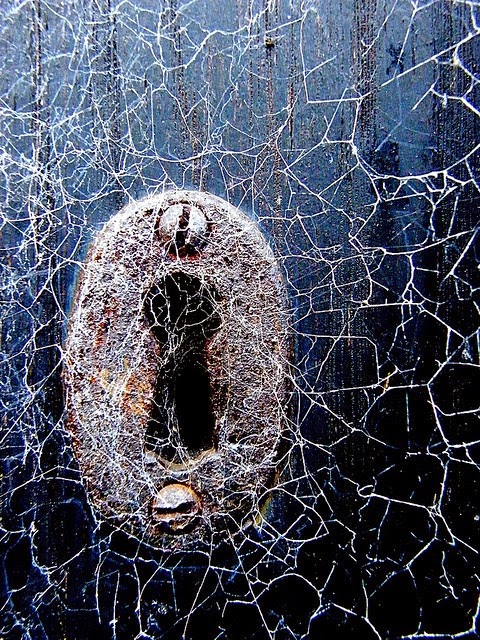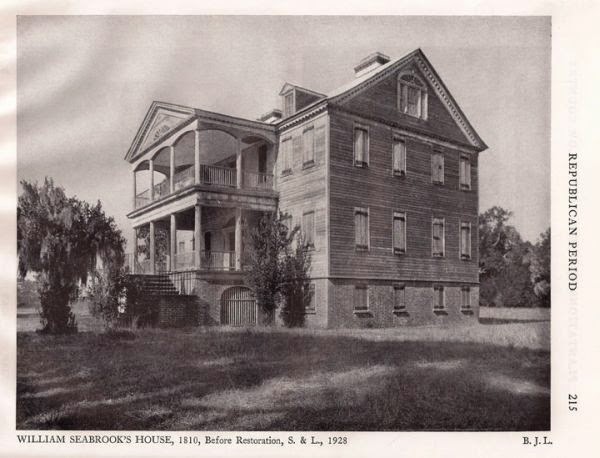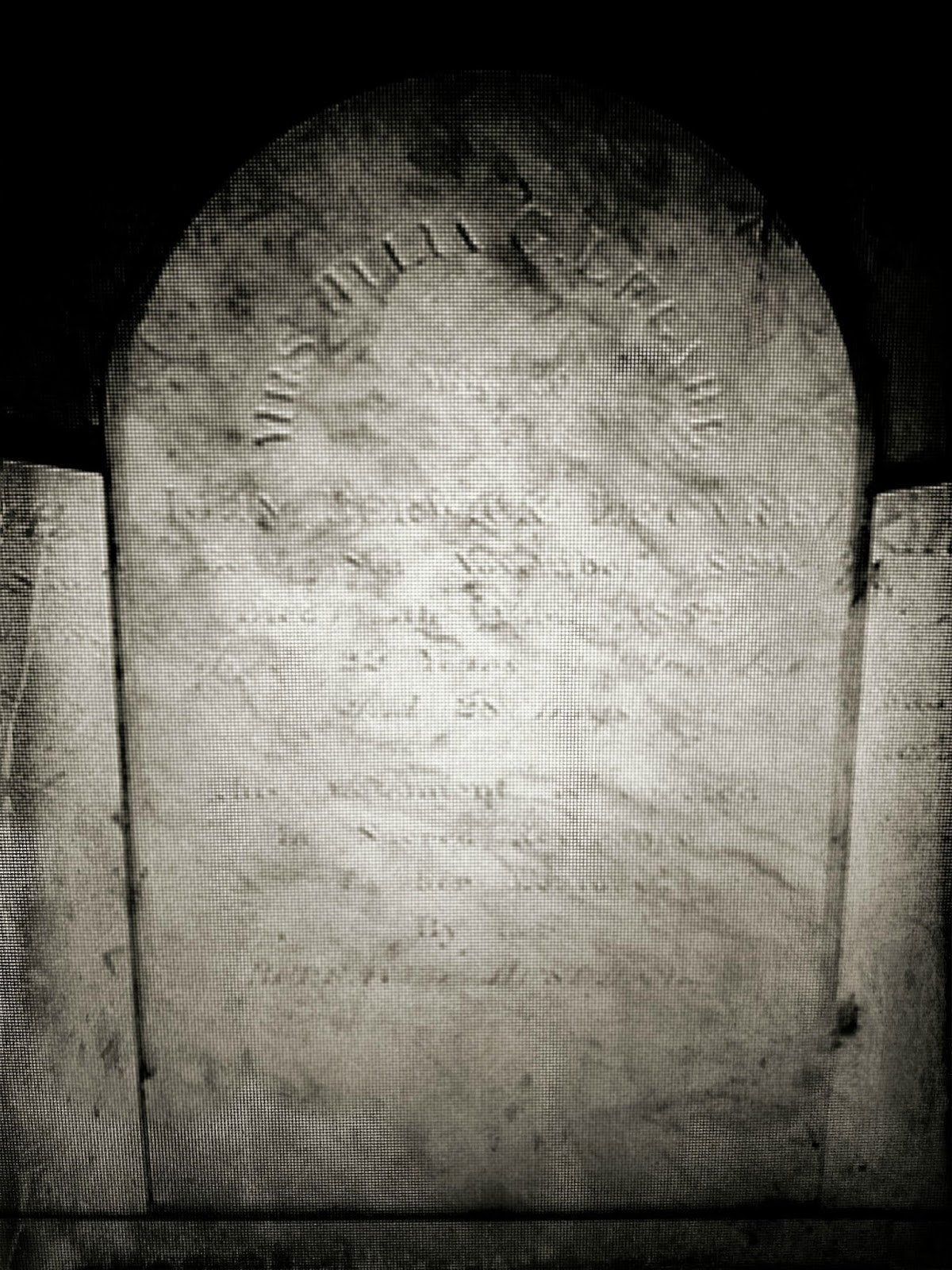 |
| From Pinterest |
LOCKED IN, ALIVE
One urban legend that surrounds this island is the tale of Julia Legare. The story that has been regurgitated for over a 100 years is that Julia, who is always described as a young girl or pre-teen, became ill with diphtheria while visiting family. Although it appeared as if she died, she actually fell into a coma. Believing that she had died, her body was interred into the family crypt. Locked and sealed inside the family mausoleum, this terrible mistake sealed her fate as well.
The story goes on to say that when her brother passed away 15 years later, they opened up the sealed crypt to find her bones pressed against the crypt door, her fingers damaged from scratching on the doors and floor of the vault. Many websites even claim that the scratches she made are still inside the crypt if you go look.
This has all the ingredients to a perfect scary story to tell while visiting the Presbyterian Church Cemetery there on Edisto Island, but the real story seems to be much different. In fact, Julia's story, or may I say her family's story, is much more interesting.
SEABROOK PLANTATION
The story begins here at Seabrook Plantation, just three miles from the Presbyterian Church Cemetery where Julia is buried. You see, the Seabrook Plantation is where Julia grew up. She was the daughter of Captain William Seabrook, one of the richest cotton men in all of South Carolina.
William Seabrook was born on Edisto Island on February 15, 1773. His parents were John Seabrook and Sarah Lawton. By the age of 17, William had taken charge of his mother's estates and managed the properties so well that they made a great deal of money off of them. It was said that he was one of the very first plantation owners to cultivate sea-island cotton (or black seed) successfully. He was also one of the first to use salt mud as fertilizer for his crops. Besides owning several plantations, William had a very prosperous ferry-boat business, running a steamboat line. It was called the Edisto Island Ferry, and it went between Charleston and Savannah and all the other island areas.
 One of the last standing pieces of his legacy, the William Seabrook House, was built in 1810. Choosing only the best of the best, William picked the architect who designed the White House, James Hoban.
One of the last standing pieces of his legacy, the William Seabrook House, was built in 1810. Choosing only the best of the best, William picked the architect who designed the White House, James Hoban.William had been married and had several children from his first marriage, however it was his marriage to Elizabeth Emma Edings that brought Julia into the world. Julia had several brothers and sisters through this marriage as well. The eldest was Robert Seabrook who was born in 1821, sadly he passed away 6 months after Julia, in October of 1852. Then there was Joseph, he was born in 1823 but died in an ill fated accident aboard the SS Pulaski which sunk on June 14, 1838 off the coast of North Carolina after an explosion in the boiler room. Julia also had three sisters, Carolina, who was born in 1825, and later married James Hopkinson. She died in 1878. Martha, who was born in 1828. and whom married Ferdinand de Lasteyrie. She outlived Julia as well. Then the last of her sisters, Julia's baby sister Emma, who was born in 1831 and died in 1834 at the age of 3.
As for Julia, she was born Julia Georgiana Seabrook, on November 18, 1829 and passed away on April 15, 1852. There are several books that state that Julia actually died in 1862, however the inscription inside the family crypt plainly states 1852.
LIFE AT SEABROOK
 |
| Library of Congress/Seabrook Plantation |
As most children do, eventually, Julia grew up. She did not die a young girl or even a teenager, who was buried alive, as the urban legends claim. No. In fact, Julia went on to marry John Berwick Legare (pronounced La-gree) as a young woman.
MARRIAGE TO LEGARE
I appears that Julia married John Berwick Legare around 1848 at approximately 18 years of age. In all of the books I have found that list William Seabrook's children and how they died, Julia's death is never mentioned. I could not find a newspaper clipping or any sort of record of how she died at all so the cause of her death, although many state was Diphtheria, is still undetermined. I also could not find any evidence that mentions the discovery that she had been buried alive.
The claim that she was interred by her family, just laying her body down and locking it inside is ludicrous. Besides, have you seen the inside of the crypt? It is not that big, there wouldn't be a lot of room to just lay someone down and leave them.
Normally, family crypts have spaces in the walls to have your coffin placed and then sealed up into the wall. Or sometimes family crypts go below the ground into chambers where the family are then interred and the another door is sealed at the base. The inside of the crypt is bare, meaning they must be buried in the walls or below the crypt itself. There are three people buried in that family crypt and none of their bodies are laying out in plain sight. They wouldn't have left her in there and then buried her in the wall or in the ground later, that wouldn't make any sense.
Another thing that doesn't add up is the part about her brother dying. When her brother Robert died six months later, not 15 years, he was not buried in that crypt. The crypt Julia was buried in was the Legare crypt, not the Seabrook crypt. No. Instead, he was given a beautiful monument in the cemetery. (Click here to see his memorial) . So that theory of opening the sealed doors to find her bones didn't happen with her brother's death because he wasn't buried in that crypt.
Upon my research into this story further, I did find something quite odd though. You see, the stones in the Legare family crypt are enscribed for John Berwick Legare, Julia and their son, Hugh Swinton Legare, who died at the age of 6, in December of 1854. What is strange is that old books about the history of Edisto Island state that the couple never had any kids, dying childless. So who is this little boy who was buried in the crypt with John and Julia? And how did he die at such a young age?
I came across the 1850 Census, which lists John and Julia as having not one, but two sons. More than likely the author of the book that states the history of Edisto Island, forgot to the turn the page of the census record book, as Hugh and little Joseph were mentioned on the next page. In 1850, Hugh was noted as being 2 years old, while Joseph was only 6 months old.
 |
| 1850 Census, page 15 |
 |
| 1850 Census, page 16 |
Mary Ann Seabrook was one of the older daughters of William Seabrook's first marriage to Mary Mikell. She was 46 years old in 1852, the same time that Julia died. Perhaps John turned half of the property over to Mary as a final wish to his wife before she died? Maybe she was left to care for Julia's two young sons after their mother's tragic death?
Julia died in 1852, Hugh died in 1854 and finally John passed away in 1856. All three of them are buried or entombed together in the Legare family crypt. Sadly, I could find no record of what happened to their youngest baby, Joseph. Did he die, too? Or was he raised by a family member?
BACK TO THE STORY
So why do people keep perpetuating the story that Julia was buried or sealed inside the family crypt, alive? There hasn't been any sort of documented evidence put out there that I have found that proves this. I find it interesting how the stories always say she was a child or a young girl, when in fact she was a married woman when she died, more than likely from natural causes. Had it been some scandalous death or even such a fiasco as finding out she had been buried alive, you would think there would be some sort of record of that.
As far as the scratches on the door, floor and walls...the crypt is made of stone so this is unlikely. If there are scratches they were probably caused by sharp objects scraping against it over the years. Fingernails do not cut granite, marble or stone. The softest stones are at the lower end of the Mohs scale when it comes to stone work. Fingernail scratches can be done on stones that are soft, but not marble, granite, sandstone, limestone or slate that are on the higher end of the Mohs scale. I doubt they used the soft stone for something like a family crypt that is meant to endure throughout time to hold the deceased. No, I find it unlikely that any scratches you find being from a human beings nails.
 | |
| Epitaph for Mrs. Julia G. Legare |
How do we know that this door story is even true either? I've already debunked the fact Julia wasn't a child when she died and that the scratches couldn't have been made by her either. Perhaps this added rumor about the doors is just that, a rumor. Just a made up story to add to the mystery of the whole tale.
When someone finds the smoking gun evidence that states as a fact that Julia Seabrook Legare was actually buried alive in that crypt, then I will believe it. Otherwise, I feel this is just another one of those over embellished urban legends that become too good not to tell. With age the story becomes more and more real to people, and the legend and lore become larger than life. Sadly, most of the time these stories have little to no truth to them.
Take the story of Corinne Elliot Lawton, for example. For over 100 years people have been flocking to Bonaventure Cemetery to hear the tale of her tragic death. Yet, the urban legend around her story is just a fabricated tale as well. What about Anna Corbin and how she was found in a locked cupboard in the kitchen of the Preston School of Industry, bludgeoned to death? Yes, she was murdered, but she was not found where everyone thinks she was found, yet people continue to perpetuate the myths because to them it's more exciting. And finally, what about the story of Bathsheba Sherman? Lorraine Warren and Andrea Perron have spun one yarn of a tale about her life and death, which never happened the way they claim. You see, it's easy to believe the stories you are told, or even the ones you read, watch on tv or in the movies....but that doesn't mean it's true. You must do your research and find the evidence first, don't just go blindly believing things without being shown proof.
Just like the three other women I have mentioned, Julia Legare's story is one that is shrouded in mystery, but not facts. I haven't seen any factual evidence that say she was actually buried alive, and there is no proof that the doors mysteriously come off or that she left scratches in the floor with her bare fingernails. These are just over embellished stories added to Julia's factual death. Maybe there is a record out there that will put this myth to bed once and for all, how she really died and where this "buried alive" story came from.
If there is evidence that she was buried alive, I would love to see it. If someone out there has it, post the documents online for the world to view it. I am all for that, but until then I will have to remain skeptical about that part of the story. What does pique my interest is finding out just what happened to baby Joseph? To me, that is a mystery worth solving.
To read more about Julia Legare's life and death, as well as other mysterious and bizarre tales of the past, purchase your copy of:
"Stories of the Forgotten: Infamous, Famous & Unremembered."
(Copyright 8/7/2014- J'aime Rubio)
Also published in the book, "Stories of the Forgotten: Infamous, Famous & Unremembered" by J'aime Rubio, 2016.
Early Generations of the Seabrook Family,
(Compiled by Mabel L. Webber).
Descendants of William Lawton.
Edisto Island: 1663-1860- Charles Spencer.
South Carolina- Historical Magazine, 1916.
Seabrook Family Genealogy.
Findagrave
U.S. National Register of Historic Places.
The People's press, and Addison County Democrat., July 03, 1838.
https://www.amazon.com/Stories-Forgotten-Infamous-Famous-Unremembered/dp/1523981172

No comments:
Post a Comment
Note: Only a member of this blog may post a comment.